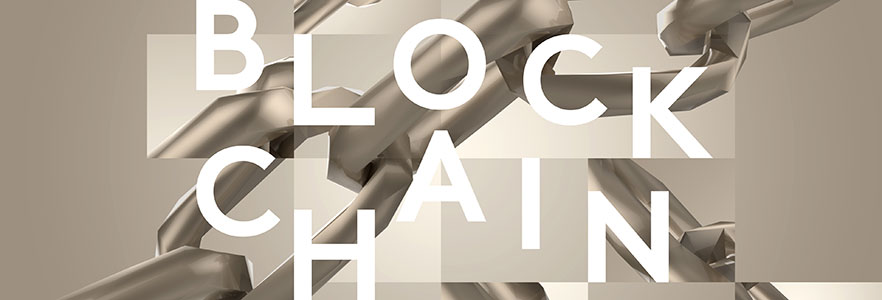Blockchains will change construction
Blockchain technology could play a key role in the emerging digital built environment.
The construction industry is ripe for disruption, greater transparency in supply chains is much needed, paperwork is still predominant, and as building components increasingly become ‘intelligent’ there is a need for a secure digital ledger for sensors, owners and operators. Blockchains, if implemented correctly, could improve construction’s transparency and efficiency in a number of ways.
First, a definition. A blockchain is a decentralised, tamper-proof digital ledger of transactions. The world’s first encounter with Blockchain technology was in 2009 with the launch of Bitcoin, a digital peer-to-peer cash system.
Bitcoin’s blockchain, among other ingredients, is the answer to a problem computer scientists had been trying to solve for years: how to create a digital asset that cannot be copied. It allows two or more parties to transfer monetary or any other representation of value, share information and run automated ‘smart’ contracts in a way that does not rely on a trusted third party like a bank, a notary or any private company as a trusted middleman.
The ability to create, validate, authenticate and audit contracts and agreements in real-time, across borders, without third-party intervention, makes Blockchain technology appealing to many professional services organisations. Many global financial and legal institutions are exploring and discussing the potential impacts and opportunities of Blockchain technology in their businesses.
The security gains and cost savings for the financial, legal and technology sectors are obvious. Design, engineering and construction need to now examine the benefits of this technology.
The decentralised, permission-less and censorship-resistant approach of Blockchain technology opens up completely new ways to track the flow of materials, contracts and payments in supply chains. Knowing in real-time which materials have arrived at a construction site, who handled them and where they originate from, makes a blockchain potentially valuable to the operation of a circular economy.
The complex data-sets that designers and engineers produce in Building Information Modelling (BIM) software are increasingly useful to a building’s ongoing operation, and Blockchain Technology has a potential key role to play here too. This could include smart self-executing contracts between the owner, operator and component or system suppliers involved. A Blockchain could also be used to verify who added which components to the digital model.
The Internet of Things requires a ledger of things. For as more and more things become interconnected, be it in transportation, infrastructure, energy, waste or water, we will need a trusted system for transactions between these autonomously provided services and information sources. A decentralised, industry-wide Blockchain could play a central role here.
It is important to not just look into ‘Blockchain’ because everybody does but rather try and understand the fundamental change a well implemented, open and immutable Blockchain offers the industry over paper and decade old shared database systems.
Please find the original article here.
Written by Matthias Geipel, Management Consulting Team, Arup.
--Future of Construction 10:03, 20 Oct 2017 (BST)
[edit] Related articles on Designing Buildings Wiki
- 5 things leaders can do to create a truly circular economy.
- Blockchain could transform the construction industry.
- Blockchain definitions.
- Blockchain in the built environment.
- Blockchain technology in the construction industry.
- Circular economy.
- Digital technology boost to construction industry.
- Eliminating waste at scale – opportunities for blockchain.
- How to utilise technology in construction projects.
- Is disruptive innovation possible in the construction industry?
- Non-fungible token NFT.
- Student projects released as non-fungible tokens.
- The future of the built environment in a revolutionary age.
- Unprecedented innovation and new technologies on the horizon.
Featured articles and news
Amendment to the GB Energy Bill welcomed by ECA
Move prevents nationally-owned energy company from investing in solar panels produced by modern slavery.
Gregor Harvie argues that AI is state-sanctioned theft of IP.
Heat pumps, vehicle chargers and heating appliances must be sold with smart functionality.
Experimental AI housing target help for councils
Experimental AI could help councils meet housing targets by digitising records.
New-style degrees set for reformed ARB accreditation
Following the ARB Tomorrow's Architects competency outcomes for Architects.
BSRIA Occupant Wellbeing survey BOW
Occupant satisfaction and wellbeing tool inc. physical environment, indoor facilities, functionality and accessibility.
Preserving, waterproofing and decorating buildings.
Many resources for visitors aswell as new features for members.
Using technology to empower communities
The Community data platform; capturing the DNA of a place and fostering participation, for better design.
Heat pump and wind turbine sound calculations for PDRs
MCS publish updated sound calculation standards for permitted development installations.
Homes England creates largest housing-led site in the North
Successful, 34 hectare land acquisition with the residential allocation now completed.
Scottish apprenticeship training proposals
General support although better accountability and transparency is sought.
The history of building regulations
A story of belated action in response to crisis.
Moisture, fire safety and emerging trends in living walls
How wet is your wall?
Current policy explained and newly published consultation by the UK and Welsh Governments.
British architecture 1919–39. Book review.
Conservation of listed prefabs in Moseley.
Energy industry calls for urgent reform.


























